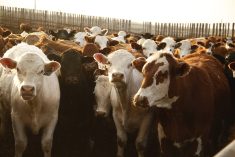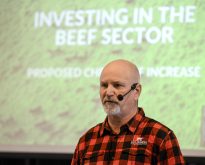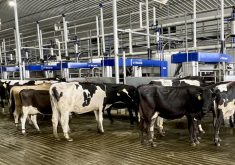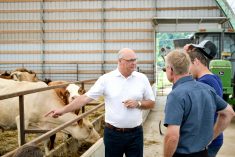In today’s world, we are surrounded by simple messages, speaking points and slogans. We all fall prey to the comfort of understanding the simple — but at our peril. Now consider the messages dominating the public view of the livestock sector. They are simple, maybe none simpler than “Cows are the new coal”.
Simple messages work but, by definition, they don’t give detail and most often they focus on only one aspect of what really matters.
They are the perfect vehicle for negative and often false messages. There are lots of simple messages around now about livestock. What’s missing is balance.
Read Also
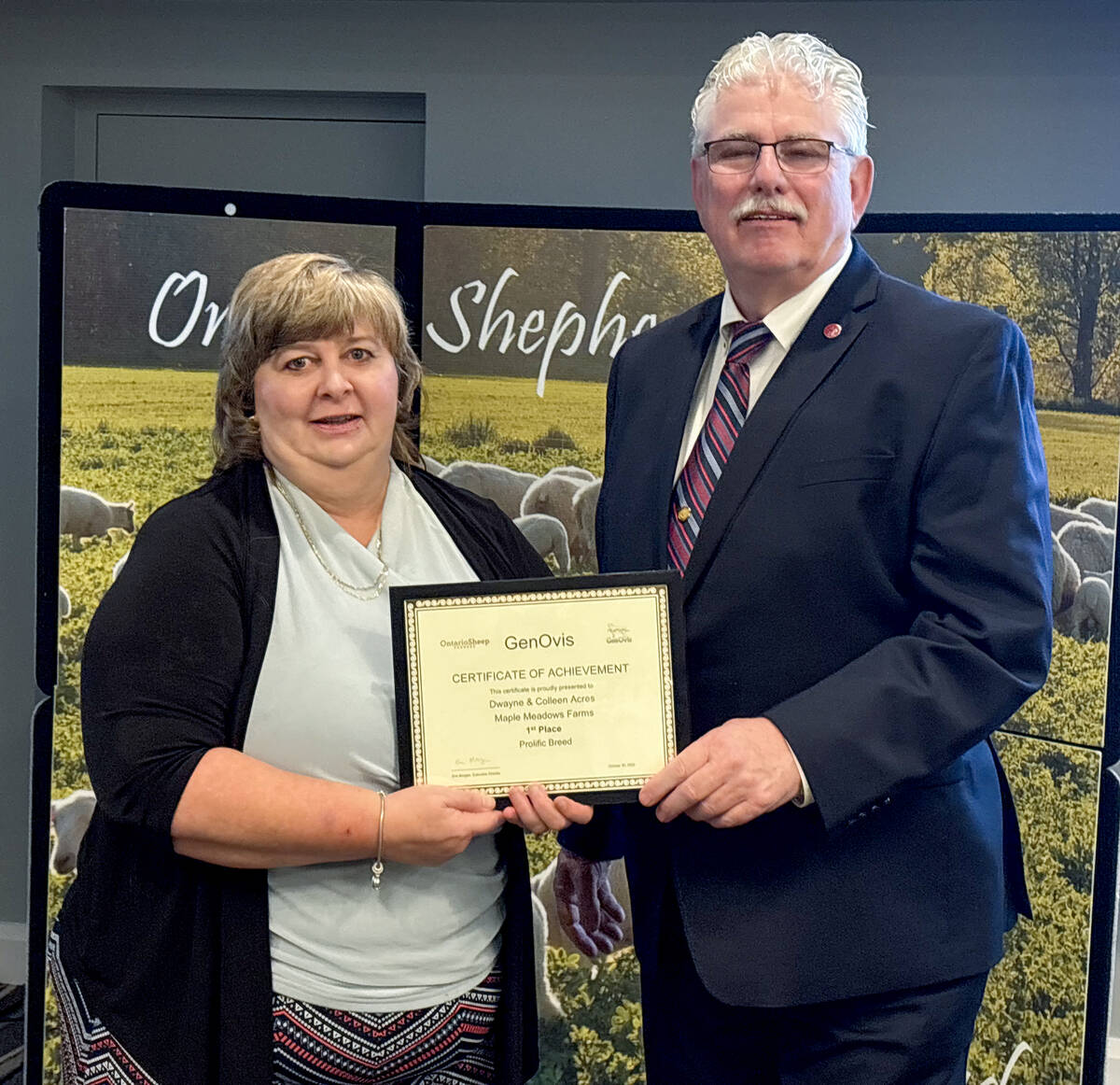
GenOvis awards presented at Ontario Sheep Farmers’ annual meeting
Producers and youth were recognized for their contributions during the Ontario Sheep Farmers’ annual GenOvis and leadership awards.
Consumers are more distant from the farm that ever and with increasingly less understanding of where food comes from and how it is produced.
This makes it easy for opponents of the sector to simply lump all livestock together with broad, negative statements. For example, the rumen is a miracle of thousands of years of evolution that makes countless acres of otherwise unproductive land useful for human food, and yet it is now being portrayed as evil.
There is no denying that livestock production has impacts on the environment. There is also no denying that livestock production gives us some of the most nutritious foods that support human growth and development, as well as countless invaluable by-products. We take this for granted in North America.
Although we like to think of ourselves as dairy, egg, chicken or beef producers, opponents don’t make that distinction, leaving us collectively vulnerable and only as strong as our weakest link. The issues facing livestock producers are bigger than any single organization can deal with, but they can be tackled if we all work together.
We have fallen hostage to the character-limited points made on Twitter and other social media. The appetite for thoughtful analysis of complex topics seems to be at an all-time low. That is a challenge on many fronts, but it is certainly a problem for the livestock sector. How do we define and get out a balanced message about livestock?
First, the livestock sector needs to define what matters. To be clear, “matters” means to your audience, so listening to and understanding everyone along the supply chain including the consumer is key. Here are several items that the final list would be sure to include.
- GHG emissions per serving of balanced protein
- Responsible animal care
- Sustainability (though that would need to be clearly defined)
- Impact on soil health (livestock can have a very positive impact)
- Contribution to the community and economy
- Effective use of resources (including antimicrobial agents)
- Environmental impact (water quality, biodiversity)
- One Health considerations (e.g., zoonoses)
- Proactive risk management (e.g., biosecurity)
- Use of resources that have other direct benefit to humans
- Secure access to safe, inspected, and local food
Next, we need to report on how we are improving regarding these important factors. This could be an annual report card, one considering the entire livestock sector. Most sectors have been proactive in dealing with many of these topics, although there is a lot of variation in approach.
Much of this information exists, but it is in many locations and formats, and is sector-specific. Though it would take work to create, a comprehensive livestock report card would be a powerful statement on behalf of the sector.
Perhaps most importantly, we need to deliver our message in a way that will be noticed and understood. While the documentation and background papers are critical, they become irrelevant if the lead communication is not read or believed. To that end, we should focus on no more than three points. Suggested points for the livestock sector are:
- We care about the planet and animals too and we’re doing something about it.
- Livestock enhance soil health and biodiversity while providing highly nutritious foods and many by-products.
- The industry is a major employer and helps to ensure our food security in an unstable world.
We need simple messages (three is key) to be heard. They must resonate with the audience and be trustworthy and they need to be backed up with detail and documentation.
Mike McMorris is Chief Executive Officer of the Livestock Research Innovation Corporation and has more than 30 years’ experience in the livestock sector working for government, producers, and industry organizations. Follow LRIC on Twitter at @LivestockInnov.






